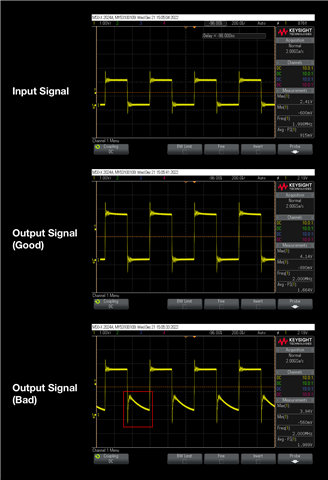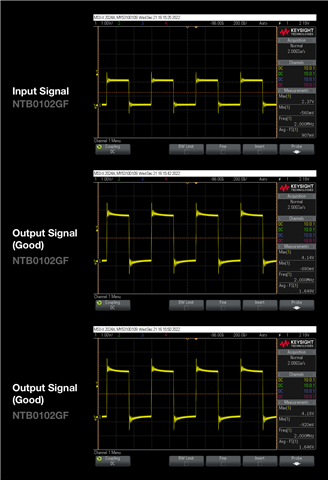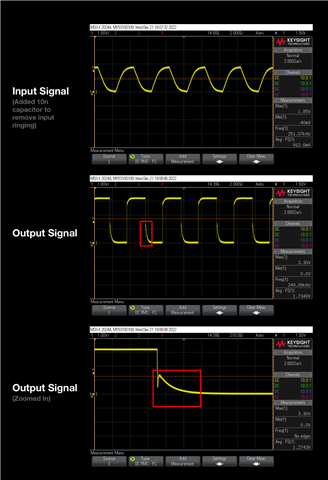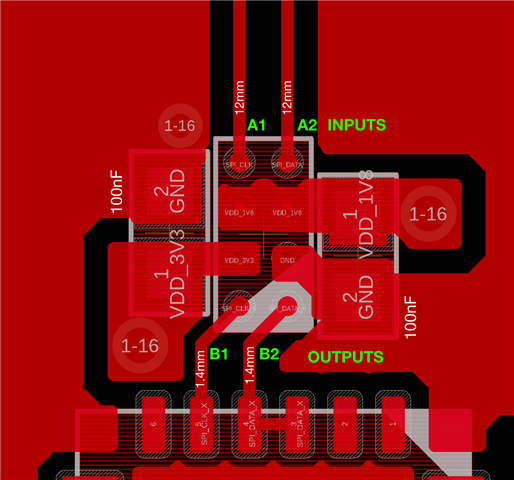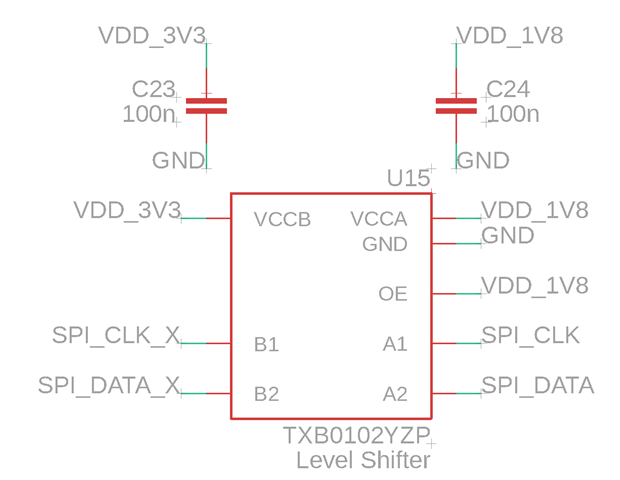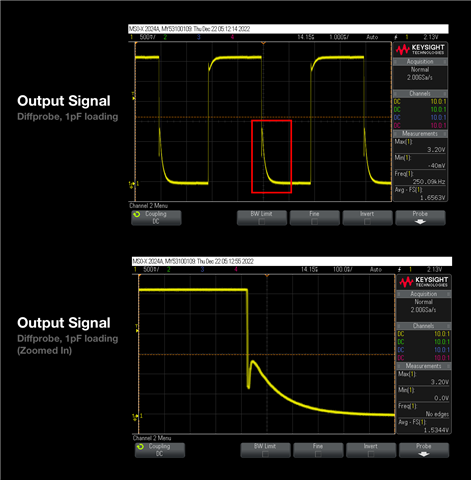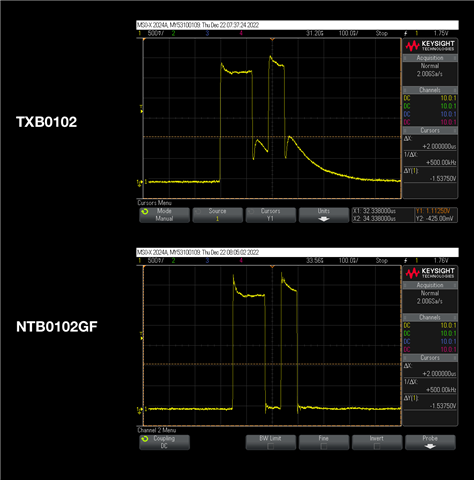Other Parts Discussed in Thread: MSP430FR2433
I'm using the TXB0102 and seeing noise that prevents using it above ~1MHz, but the datasheet claims 60 MHz (60 Mbps) for my VDD setup.
In the attached scopeshots, a 2MHz square wave drives TXB0102's inputs (A1 and A2). TXB0102's outputs (B1 and B2) are connected to separate pins of an MSP430. The MSP430 configures these two pins as digital inputs (no pullup/pulldown). Trace length is <2mm from TXB0102 output to MSP430 inputs, so pin+trace load capacitance is <15pF.
As the scopeshots show, one of the TXB0102's outputs behaves normally, while the other sees a spike and never settles to 0V, which prevents using it above ~1MHz.
Any idea what's going on here?
